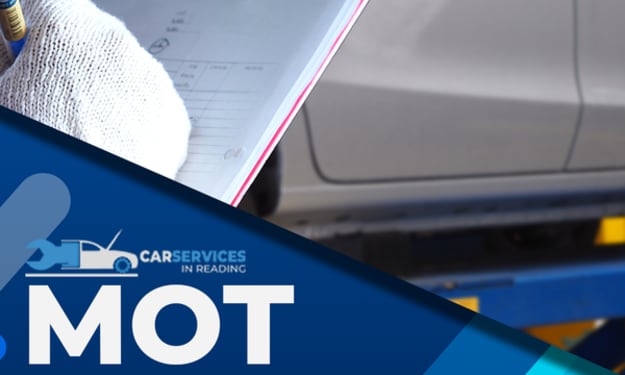What causes the low fuel light to come on when the tank is full
If your car's fuel gauge isn't reading correctly or is reducing faster than usual, find a car services near me garage online and schedule an appointment with a technician to have your fuel level sensor and fuel gauge checked.

In this article, we'll look at a common problem that many people experience with their cars. When the low fuel light illuminates unexpectedly whilst driving, you will usually pull over to the nearest fuel station to fill up your tank. As a driver, imagine that you only need half of the tank of fuel or even less to properly refill the car.
Many people face the problem of why the fuel light comes on when the tank is full at some point throughout the life of their car.
Despite how easy this issue appears to be to repair, it can make a driver nervous when driving and afraid of running out of fuel.
It is recommended to check MOT status of your car and have this issue resolved before your next MOT test. The reason for this is because your vehicle must have enough fuel for the MOT test examiner to do the essential inspections, but if the fuel gauge indicates that your tank is empty while it is full, the examiner may refuse to perform the MOT test.
As a consequence, we'll analyse this issue to determine what's causing it and how to fix it.
Why does my fuel light come on when my tank is full?
We need to understand how the car estimates fuel usage to find out what's causing this problem. We also need to figure out how it recognises fuel tank changes. This technology is known as a fuel level sensor. The voltage across the variable resistor is used to determine how much fuel is remaining in the tank. If you're still not sure after reading this, find a car services near me garage and talk to your local car mechanic of possible issues.
The fuel gauge is made up of the following parts:
1. A Float Switch - This is a gadget that floats over the quantity of fuel in the tank to represent the amount of fuel.
2. Variable Resistor - This is connected to the float through a metal needle and detects changes in float height.
3. Needle - It looks like a little windscreen wiper that glides across a resistive surface.
The float switch is connected to the variable resistance, which floats above the fuel surface, via a metal connecting rod. The variable resistor's end is linked to the ground as the wiper moves across the resistive material. When the fuel level varies, the wiper goes across the variable resistance, causing the voltage to fluctuate. As a result, when the tank is empty, the wiper points to high resistance, and vice versa. The resistance is lowered when the fuel tank is full. As a result of this pre-programming, the fuel gauge understands and functions with this formula.
If you go online to check MOT history of your car and find out that fuel related issues was a reason for a MOT failure, you should consult your findings with your car mechanic and request full diagnostic and health check of your car.
The fuel level sensor within the fuel tank, as many of us may know, could be the root of the problem. The sensor is made up of a float connected to a variable resistance board. They take the form of little metal lines that hit the board and provide information to the driver's dashboard fuel gauge. Metal lines rust and become rough as they age due to low-quality fuel or other harmful substances added to the fuel.
Holes between the metal sheets and the float needle are now being created by these interwoven fingers. They continue to separate and leave gaps, resulting in inaccurate fuel levels and readings. At this time, the peculiar behaviour of the fuel gauge is noticed, which perplexes and annoys drivers.
This resistance is linked to the fuel gauge on the driver's dashboard. Because of the changing resistance, inaccurate fuel estimations are made, resulting in the low fuel indicator remaining lighted even when the tank is full. Look for a car garage in Reading online and schedule an appointment with a skilled vehicle technician to get this problem fixed or needed parts replaced.
How Can It Be Repaired?
Before diagnosing and attempting to repair the defect, we should be cautious while working with any fuel parts to avoid any danger.
To begin, you'll need to change the type or grade of fuel you're using. This is because impurities and water (if present) can rust and destroy the variable resistance, making it more difficult to get an accurate reading.
Allowing the fuel tank to run out of fuel allows debris from the bottom of the tank to become trapped in the variable resistor, making accurate reading impossible.
With an ohmmeter, measure the resistance between the two terminals of the variable resistance. Then you must compare it to the full and half tank values in the vehicle handbook.
If you see a different value, this means the variable resistance isn't working. Re-rub it with abrasive and rust cleaning until the pre-determined values are achieved. If the fuel level sensor continues to give you false readings, it should be replaced right away.
If the fuel tank lid has a small ventilation opening, this might also cause the fuel level sensor to be damaged. The function of this hole is to release excess pressure. When the fibreglass tank closes the opening between the float and the variable resistance, the metal needle between them shrinks and bends. As a result, the system will malfunction, resulting in erroneous results. If you find that the capacity of your fuel tank is decreasing, it's time to replace the cap.
Is Driving a Car with Low Fuel Harmful?
There are several disadvantages to this. For starters, the fuel in your tank serves as a coolant for the electric pump motor. If you constantly drive on a low fuel tank, the motor will overheat and eventually blow up, leaving the vehicle unworkable. Second, at the bottom of the fuel tank, all of the impurities and particles in the fuel are found. As a result, if you drive on the last few litres of fuel left in the tank, these particles will be pulled into the fuel filter, blocking it.
How Long Can You Drive with a Fuel Reserve Tank?
It is not a good idea to drive your car when the fuel light is on. Your car may be able to go 50 miles on a reserve tank. However, this will differ depending on the type of vehicle you have, its condition, and how you drive. Avoid driving your vehicle with a reserve tank of fuel, if at all possible, since this can cause further damage and cost a fortune to fix.
About the Creator
Car Services in Reading
Are you looking for a reputable and high-quality car garage in Reading ? Car Services in Reading is your one-stop shop for online garage services in Reading. Book online car repair services with us with confidence.
Enjoyed the story? Support the Creator.
Subscribe for free to receive all their stories in your feed. You could also pledge your support or give them a one-off tip, letting them know you appreciate their work.






Comments
There are no comments for this story
Be the first to respond and start the conversation.